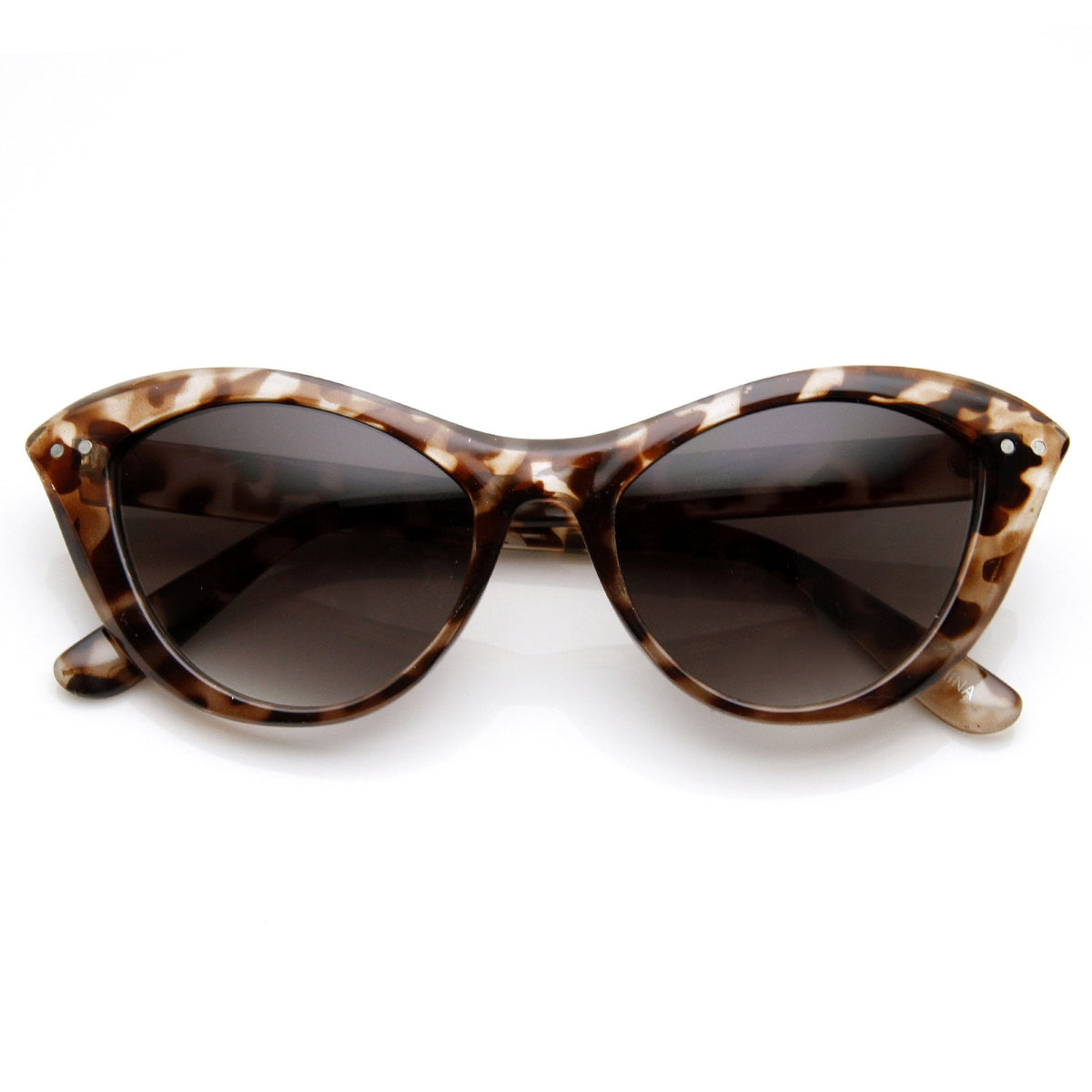
The only fashion decision lay in choosing the color of the frames these were usually translucent and in colors close to tortoiseshell, but opaque white frames were also considered chic. Sunglasses began to symbolize the glamour of life in Hollywood, but there was little variation in style at first most 1930s sunglasses, for both men and women, had round, flat glass lenses, with narrow celluloid frames. They did not truly enter the fashion sphere, however, until the early 1930s, when Hollywood stars such as Bette Davis and Marlene Dietrich were photographed wearing them between takes on the set, attending tennis matches and horse races, or trying to appear in public incognito. In the 1920s, sunglasses were occasionally worn for active outdoor sports such as golf and tennis, and for the newly fashionable activity of sunbathing. The invention of the automobile, and the popularity of motoring as a fashionable leisure activity, also brought protective eyewear into common use, and tinted motoring goggles were available by the 1910s. Sunglasses became more widely available in the 1880s, when bathing and holidays by the sea became popular with the general public by 1900, inexpensive tinted glasses (now known as "sun glasses") were sold by seaside vendors, and worn by English tourists in Egypt to reduce the desert glare. (The Inuit used slit snow-goggles of wood or bone, which covered the eyes.) As increasing numbers of Europeans and Americans were exposed to the strong sun of tropical and equatorial colonies and territories, dark glasses began to be worn there as well. The need for eyewear to protect the eyes against sun and glare first became apparent in the mid-nineteenth century, when early polar explorers and high-altitude mountaineers experienced snow-blindness, and spectacles and goggles with tinted lenses were developed, some with side shields of glass or leather. Tinted spectacles were made in Europe as early as the seventeenth century, but were used because they were thought to be beneficial to the eyes, or to conceal the eyes of the blind, and were not "sunglasses" in the modern sense.

In the twentieth century, however, they became an important fashion accessory, whose use and meaning continues to evolve.

Sunglasses, spectacles with tinted lenses, were originally a purely practical safety device, designed to protect the eyes from excess sun and glare.


 0 kommentar(er)
0 kommentar(er)
